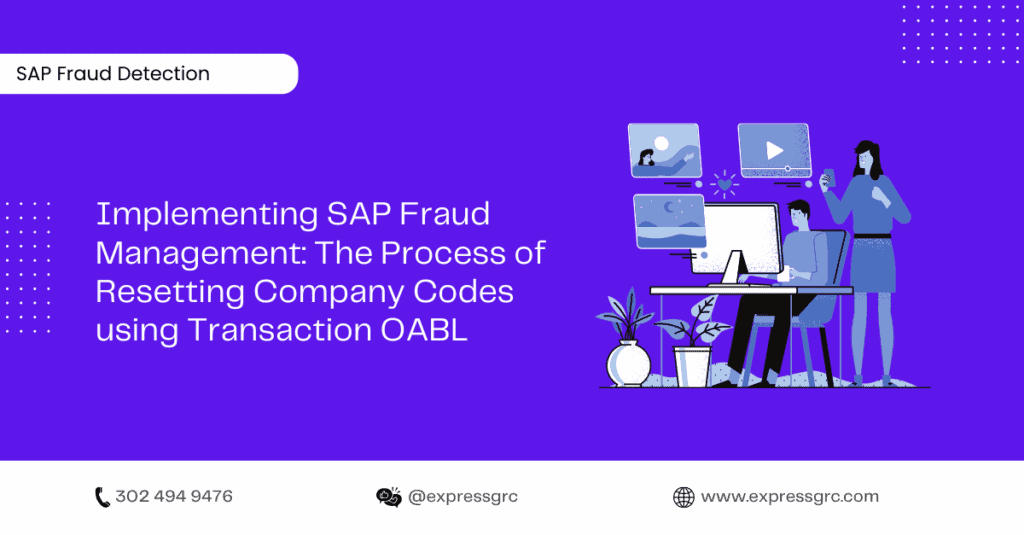Introduction:
SAP Fraud Management is a powerful solution designed to detect and prevent fraud across various business processes. Implementing SAP Fraud Management requires careful planning and execution to ensure optimal results. In this article, we will explore the implementation process of SAP Fraud Management, with a specific focus on Transaction OABL and the steps involved in resetting the company code. Whether you are new to SAP Fraud Management or looking for guidance on the implementation process, this article will provide you with the knowledge and expertise to successfully implement the solution.
Table of Contents:
- Overview of SAP Fraud Management
- Pre-Implementation Considerations
- Planning the Implementation Process
- Configuring SAP Fraud Management
- Integrating Data Sources
- Training and Testing
- Go-Live and Post-Implementation Support
- Using Transaction OABL to Reset the Company Code
- Best Practices for SAP Fraud Management Implementation
- Conclusion
- FAQ
1. Overview of SAP Fraud Management
In this section, we will provide an overview of SAP Fraud Management, highlighting its key features and benefits. We will discuss how the solution helps organizations identify and prevent fraudulent activities, safeguarding their financial health and reputation.

2. Pre-Implementation Considerations
Before embarking on the SAP Fraud Management implementation journey, it is crucial to consider various factors. This section will delve into the prerequisites and considerations that need to be addressed to ensure a smooth implementation process.
3. Planning the Implementation Process
Planning is a critical phase of any implementation project. In this section, we will outline the key steps involved in planning the SAP Fraud Management implementation process. From defining project goals to assembling a competent implementation team, we will cover all aspects of effective planning.
4. Configuring SAP Fraud Management
Configuration plays a vital role in tailoring SAP Fraud Management to meet specific business requirements. Here, we will explore the essential configuration steps, including setting up detection rules, configuring risk analysis, and defining fraud detection strategies.
5. Integrating Data Sources
To maximize the effectiveness of SAP Fraud Management, integrating relevant data sources is essential. This section will explain the process of integrating various data sources, such as transactional data, external data feeds, and internal control systems, to enhance fraud detection capabilities.
6. Training and Testing
To ensure a successful implementation, adequate training and testing are crucial. We will discuss the importance of training end-users and the implementation team on SAP Fraud Management functionalities. Additionally, we will explore the testing process to validate the system’s accuracy and reliability.
7. Go-Live and Post-Implementation Support
The go-live phase marks the transition from the implementation environment to the live production environment. In this section, we will discuss best practices for a seamless go-live, as well as post-implementation support activities to ensure ongoing system optimization and maintenance.
8. Using Transaction OABL to Reset the Company Code
Transaction OABL is a key component of SAP Fraud Management, specifically used for resetting the company code. In this section, we will provide step-by-step instructions on how to use Transaction OABL effectively, ensuring accurate and efficient resetting of the company code.
9. Best Practices for SAP Fraud Management Implementation
Implementing SAP Fraud Management requires adherence to best practices for optimal results. In this section, we will outline crucial best practices that organizations should follow during the implementation process. From data governance to user access management, we will cover essential aspects that contribute to a successful implementation.
Conclusion
Implementing SAP Fraud Management and leveraging the power of Transaction OABL for resetting the company code can significantly enhance an organization’s fraud detection and prevention capabilities. This article has provided a comprehensive overview of the SAP Fraud Management implementation process, focusing on Transaction OABL. By following the outlined steps and best practices, organizations can effectively combat fraud and protect their financial interests.
FAQ
Q: What is SAP Fraud Management?
SAP Fraud Management is a solution that helps organizations detect and prevent fraud across various business processes. It utilizes advanced analytics and machine learning algorithms to identify suspicious activities and patterns.
Q: Why is implementing SAP Fraud Management important?
Implementing SAP Fraud Management is essential for organizations to safeguard their financial health and reputation. By detecting and preventing fraud, businesses can minimize losses, protect customer trust, and ensure compliance with regulatory requirements.
Q: What is Transaction OABL used for?
Transaction OABL is a component of SAP Fraud Management used for resetting the company code. It helps organizations maintain the integrity of their financial data by allowing them to reset the company code when necessary.
Q: How can Transaction OABL be used to reset the company code?
To reset the company code using Transaction OABL, users need to follow a set of predefined steps within the SAP Fraud Management system. These steps ensure that the reset process is accurate and secure, maintaining data integrity.
Q: Are there any best practices for SAP Fraud Management implementation?
Yes, there are several best practices organizations should follow during SAP Fraud Management implementation. These include conducting thorough data governance, defining clear roles and responsibilities, and providing comprehensive training to end-users.
Q: How can organizations ensure a successful SAP Fraud Management implementation?
To ensure a successful implementation, organizations should carefully plan the implementation process, engage experienced consultants or experts, allocate adequate resources, and conduct thorough testing and training.